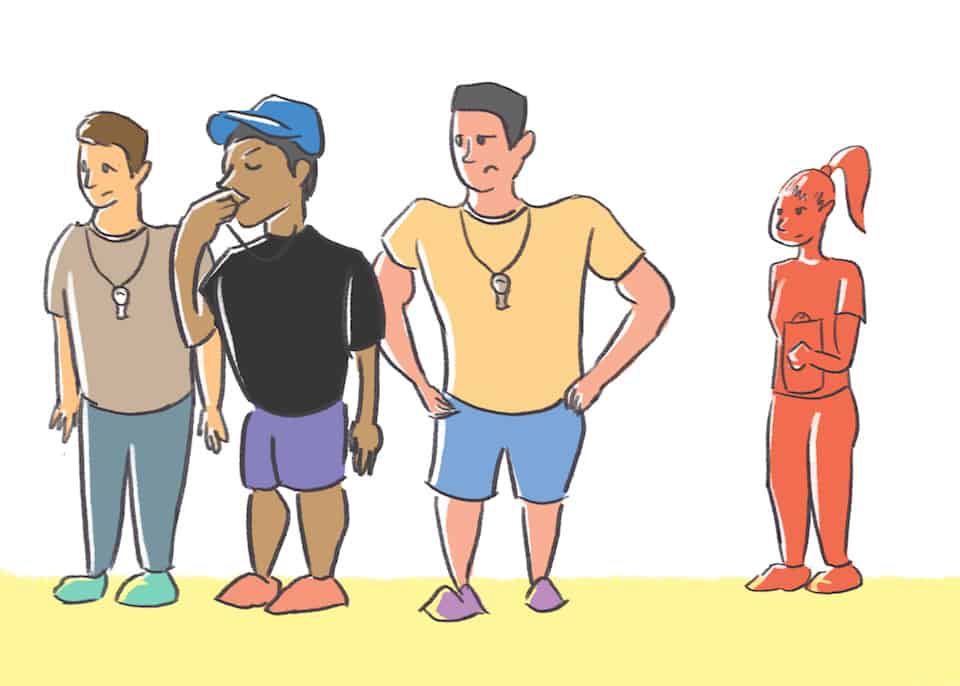Unfortunately when it comes to sports, women often face hardships and inequity compared to their male counterparts. The world of high performance and intercollegiate sport is still regarded as a place predominantly for men. One has only to compare WNBA players’ salaries, which is capped at $109,500 to player salaries in the NBA, that start at $507,336 for this disparity to be made abundantly clear.
What may be surprising to some is that this goes beyond just the girls on the court. There is an enormous under-representation of female athletic directors across universities in North America as highlighted in a recent article by The New York Times.
Currently, women hold only 13 of 313 NCAA Division 1 athletic directorships. The number of women in athletic directorship roles in the CIS is not much better. Out of 56 CIS schools, there are currently 40 men and 12 women employed as athletic directors (with four schools currently hiring).
At U of T, women make up a significant proportion of the athletic directorship roles associated with the Varsity Blues. There are currently nine women on the Blues’ athletic department team out of 18 positions. The ratio of eight female varsity coaches to 28 male varsity coaches may seem like an egregious gap, but when compared to the NCAA statistic, and many other teams in the CIS, U of T’s Varsity Blues organization is a more gender diverse athletic institution than students may think. Although it’s tempting to compare the CIS to the NCAA, the reality is that it’s a comparison between apples and oranges. “ Its hard to draw comparisons between the NCAA and CIS,” said Beth Ali, U of T’s director of intercollegiate and high performance sport. “The money that is driven through division 1 NCAA is very different.”
Ali, who has been prominent in Canadian university sport for several years, is currently in her fifth year with the Blues, and has noticed the gender gap throughout her career. “I think that women are underrepresented for sure particularly in the athletic directorship position across Canada,” said Ali, who also acknowledges the noticeable lack of women in NCAA athletic directorship roles.
The OUA (Ontario University Athletics) is comprised of university teams within Ontario and has many women on various varsity athletic departments which Ali believes is a good start. “Right now in the CIS there is a huge changeover happening in the athletic director positions. For the longest time none of those jobs came up for ever and now there’s a lot, but we’ve lost a couple of women too which is unfortunate.” Although there happens to be a lot of turnover in the CIS this creates potential room for women to pursue sports management positions. However there remains a sizable lack of role models for women, who may not feel represented or included in sport because of the lack of female figureheads. The MLB recently hired the league’s first female broadcaster for a nationally televised postseason game. The NFL made headlines recently when the Arizona Cardinals hired Jen Welter as an intern coach. Welter who holds a Ph.D in psychology, is no longer with the team.
“Where are the role models?” asked Ali, who cites her university field hockey coach Marina Van Der Merwe as one of her biggest inspirations, “where are the role models for the young women who are participating in sport to see their coaches being a women, to see their athletic director as a woman, their therapist, their team physician? [More role models] that’s how you resolve the issue.”
Ali has a philosophy that advocates for hard work and dedication. She recognises the wide gap in the amount of women in sport management and coaching positions nation wide. She rejects the title of a female athletic director, instead Ali refers to herself as an athletic director and believes that, like everything else in sport, you get out what you put in. “I don’t think it’s split along gender lines, and I think it also depends on the kind of person you are… I’m a big believer in hard work and so I do work hard but that’s me, I don’t think I do that because I’m a woman trying to prove myself, I think that it’s my makeup.”
There have been significant improvements in the number of women on varsity staffs across the country. The scope of available positions has increased to include social media managers and turf managers — positions that were non-existent until very recently. This exposure and visibility is something Ali hopes will inspire women who are interested in pursuing careers in sport, and convey to them that making their way in the world of sports isn’t as exclusive as it once was. “You know this can and will be you one day,” reminds Ali, “and there’s nothing to stop you from doing that at all.”


